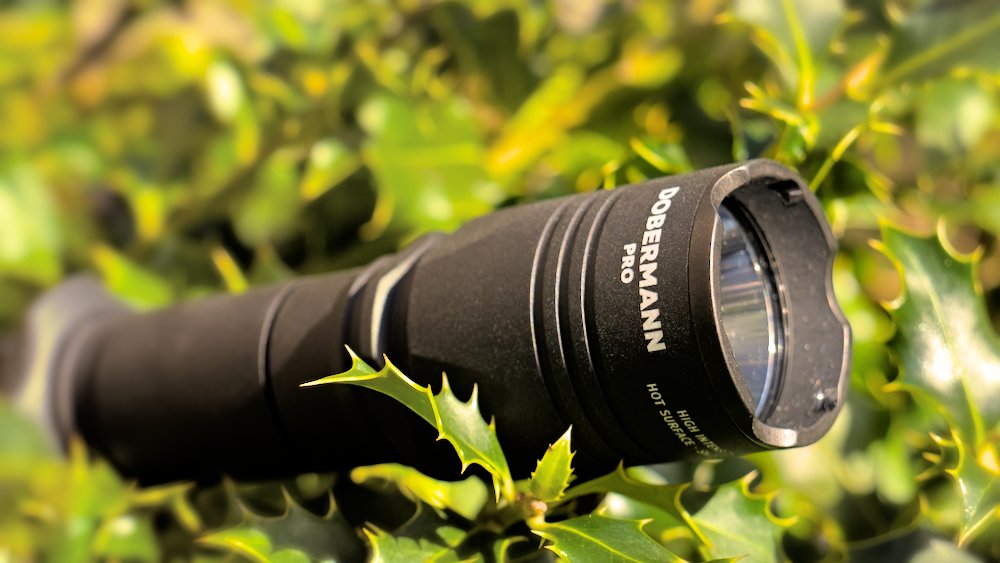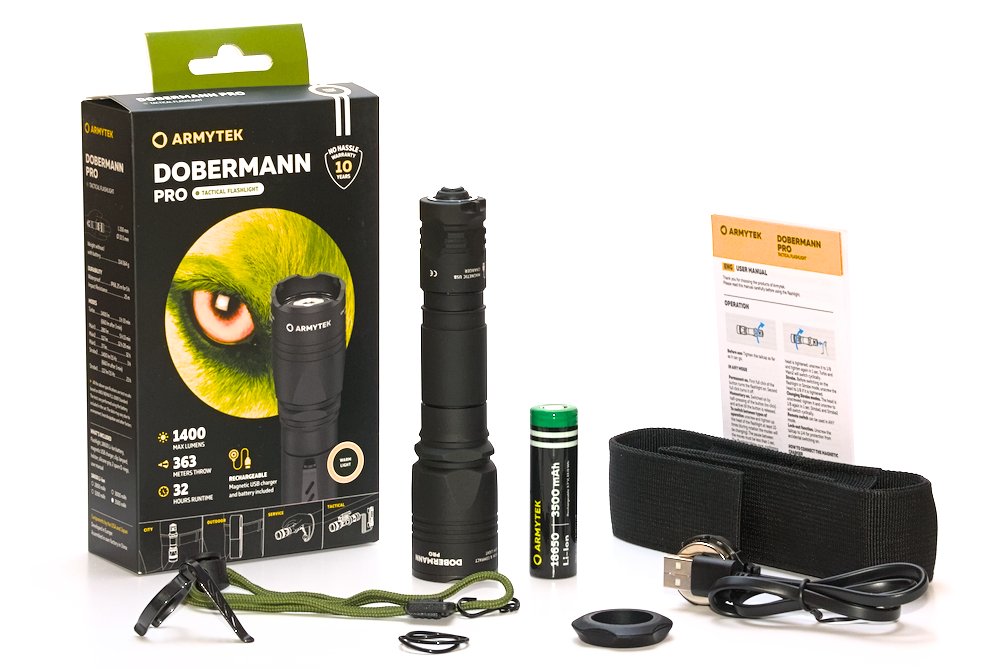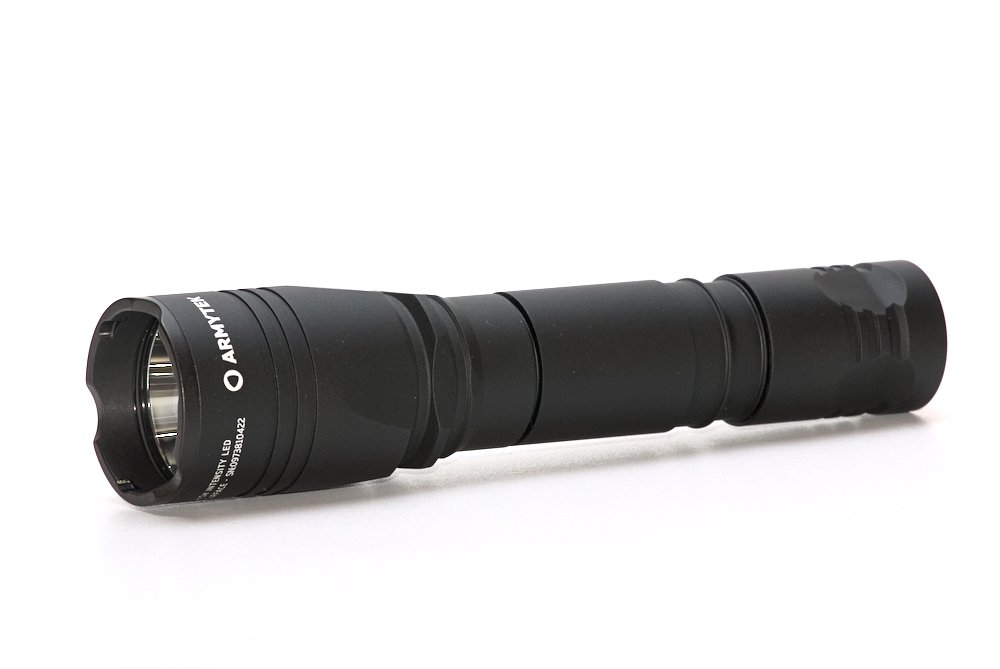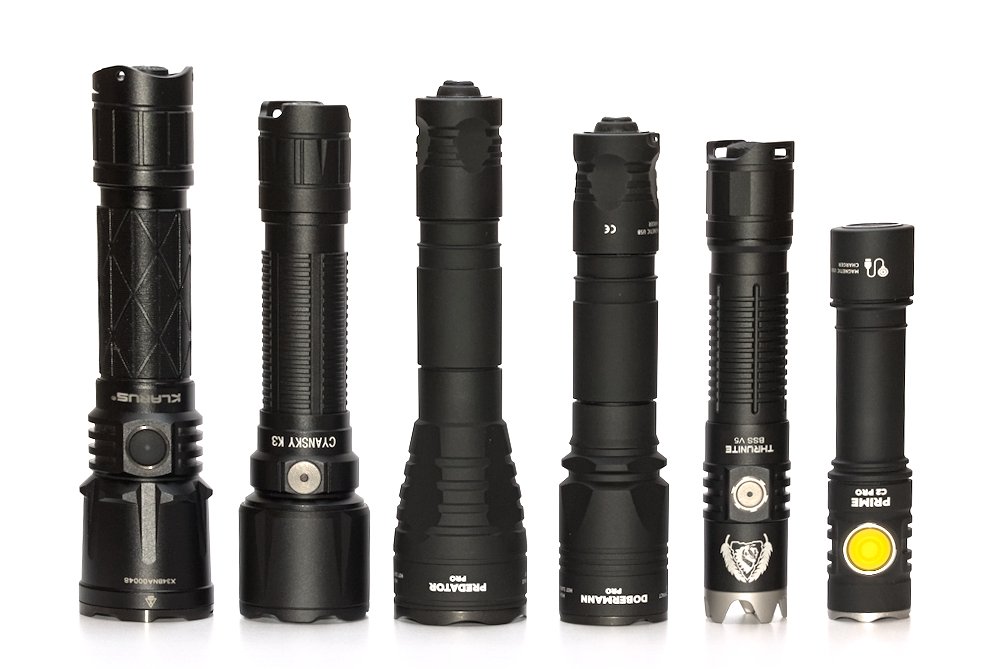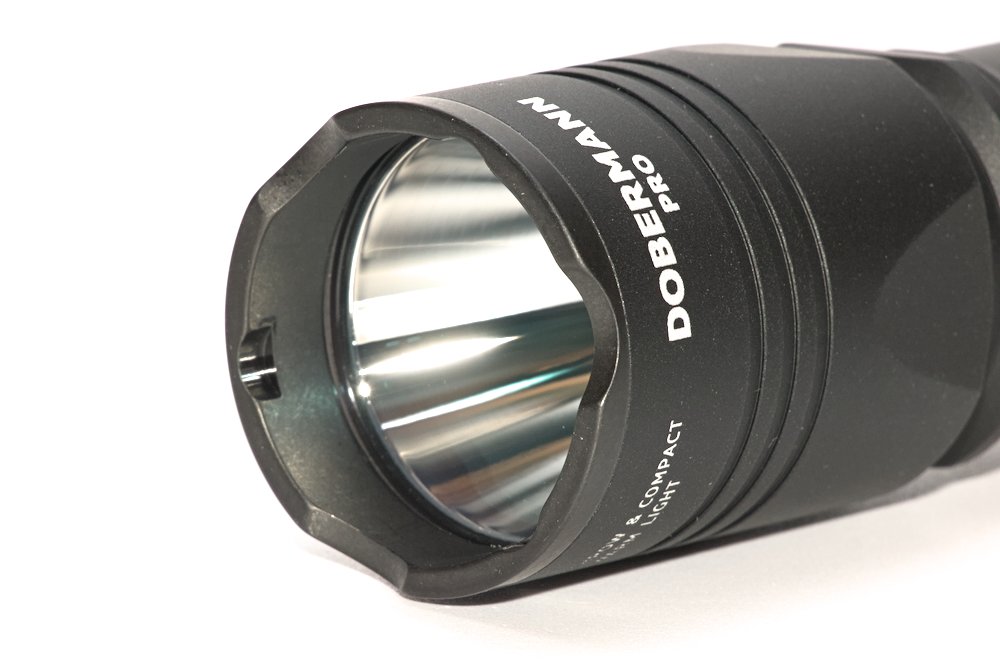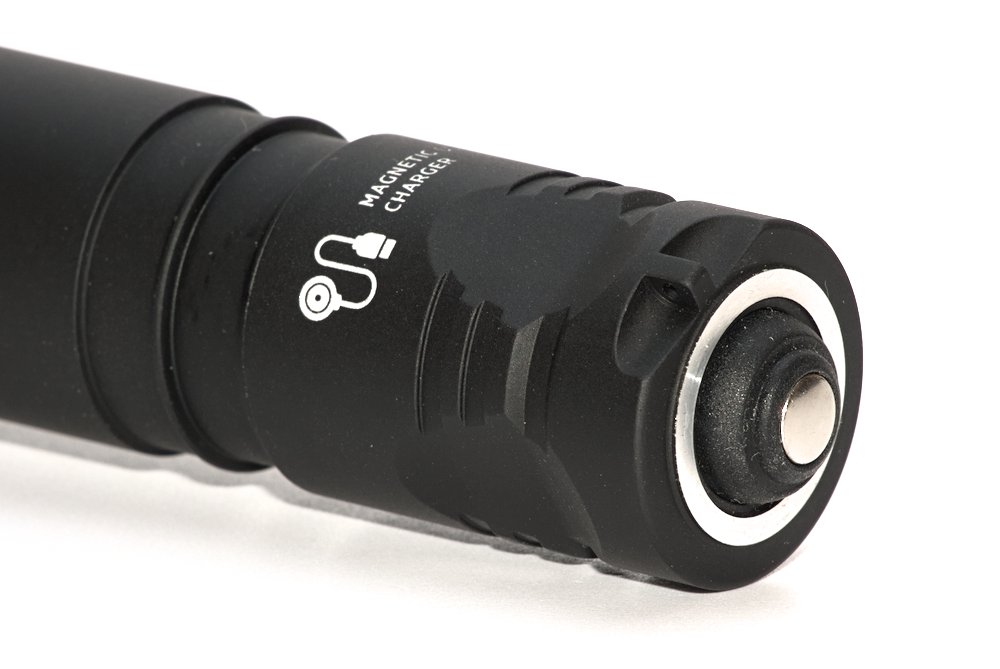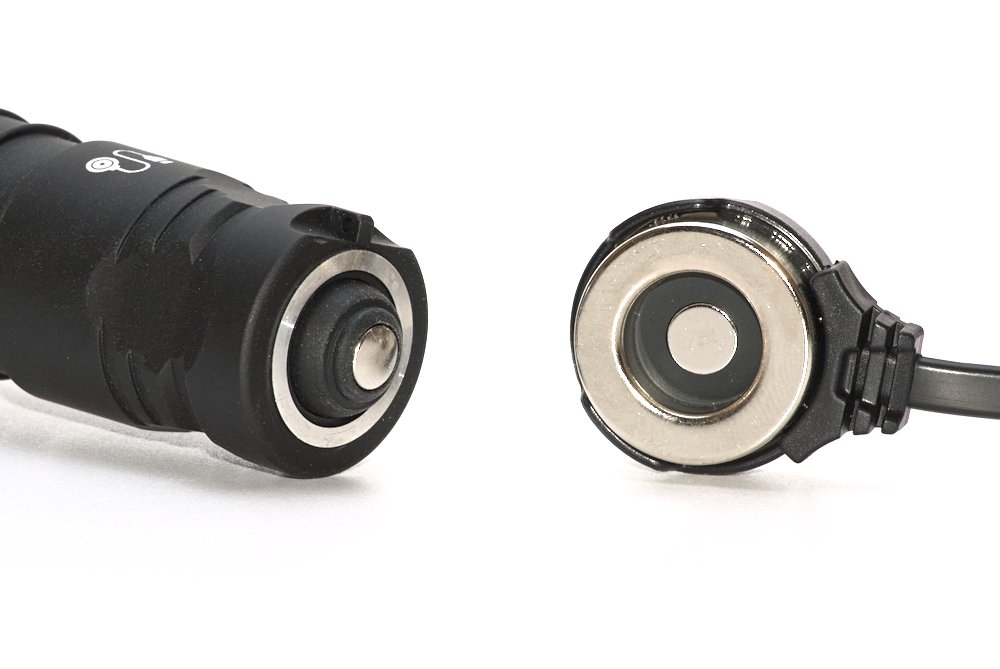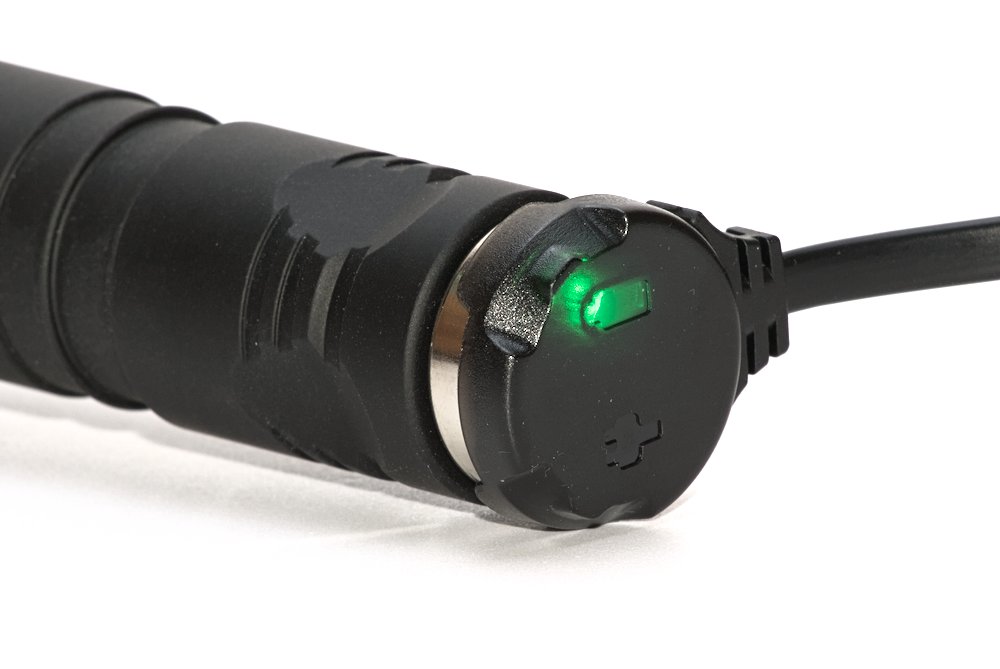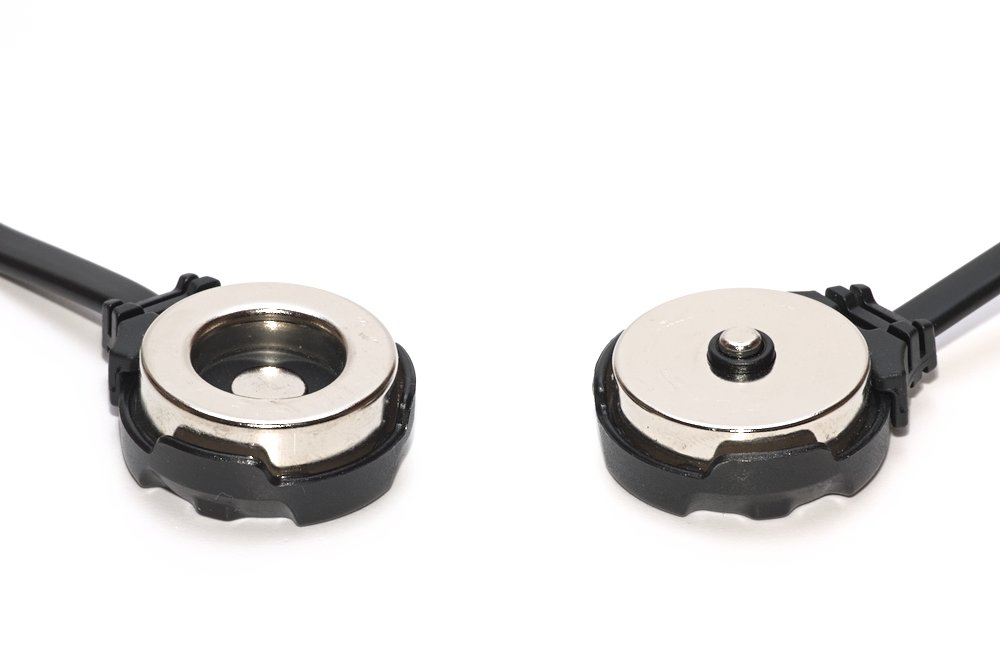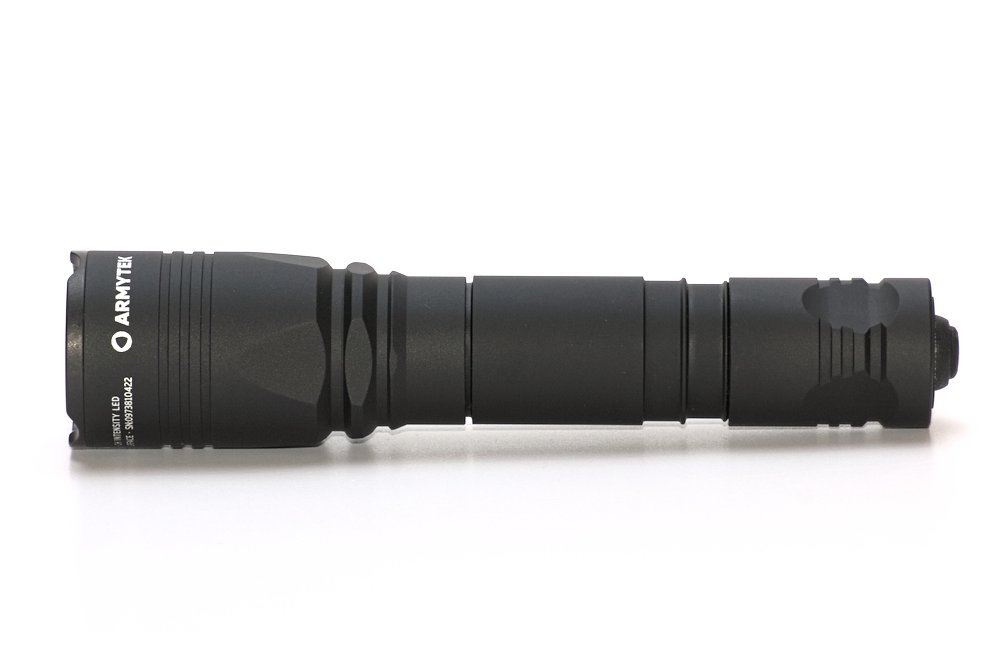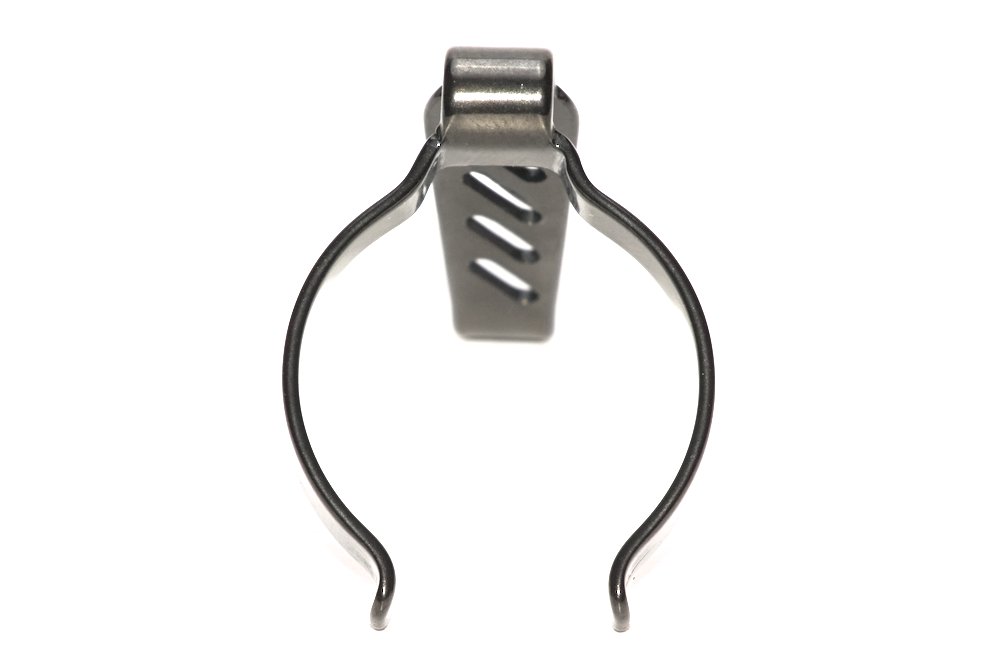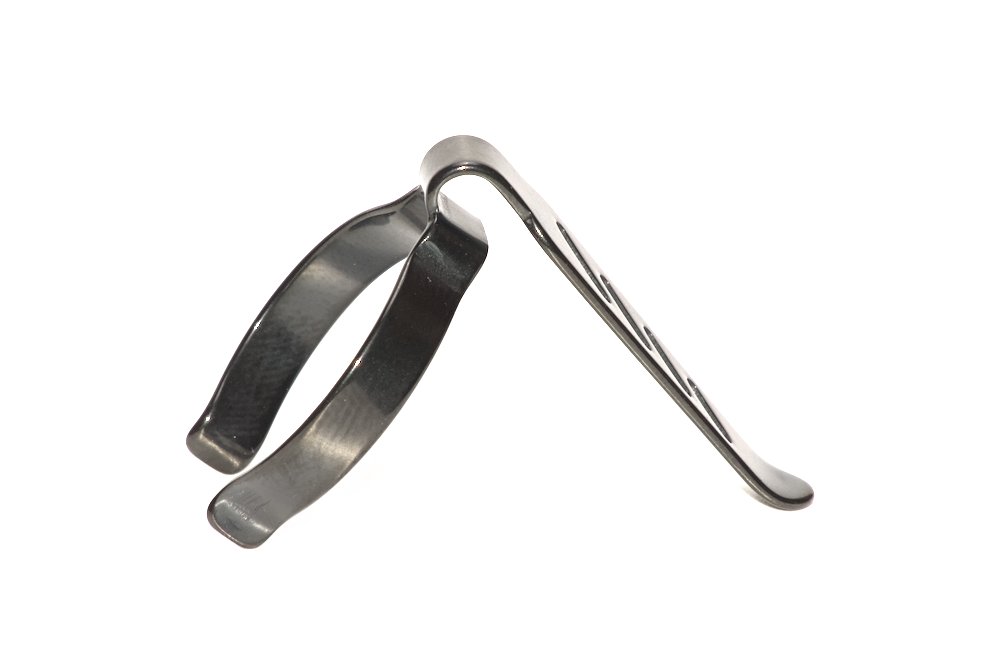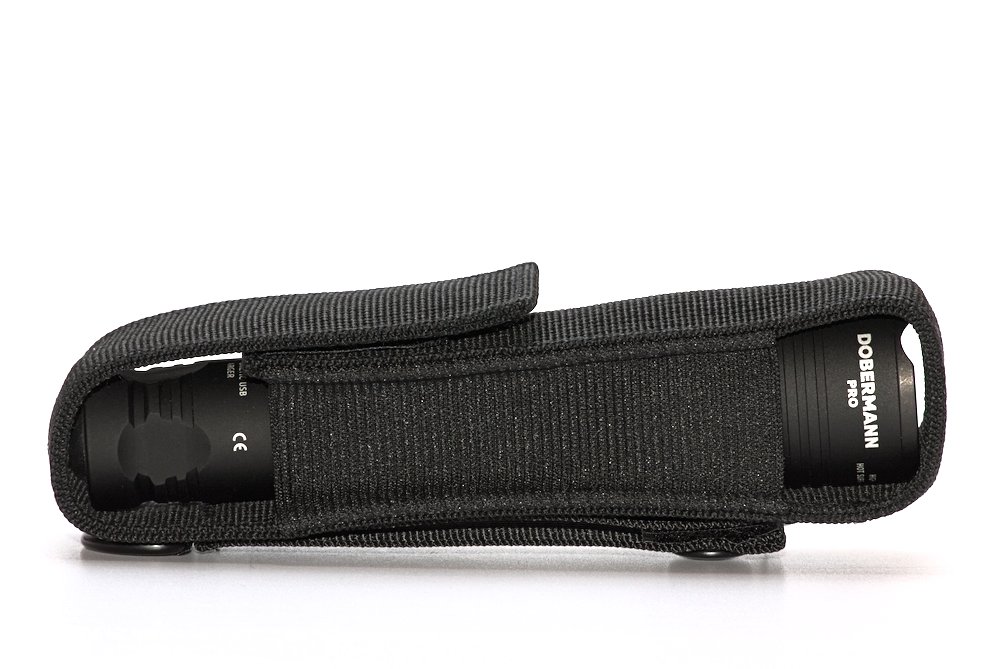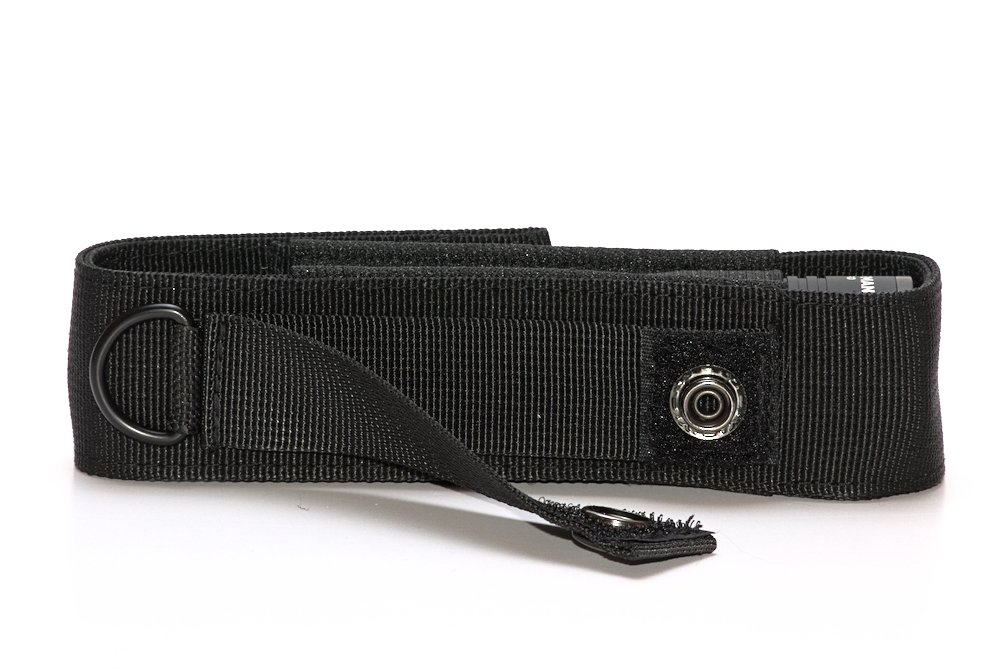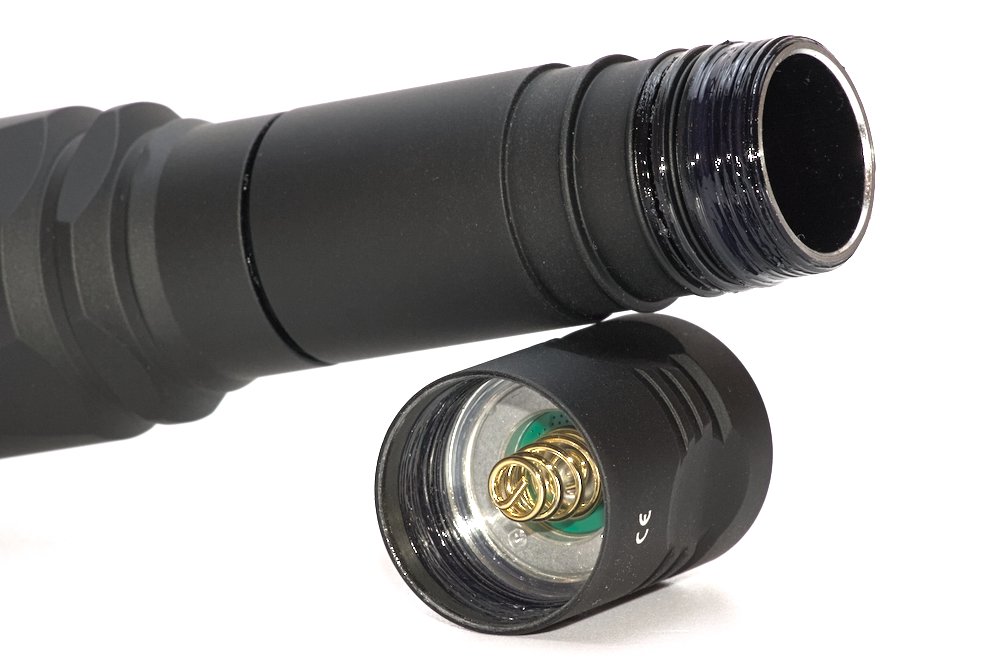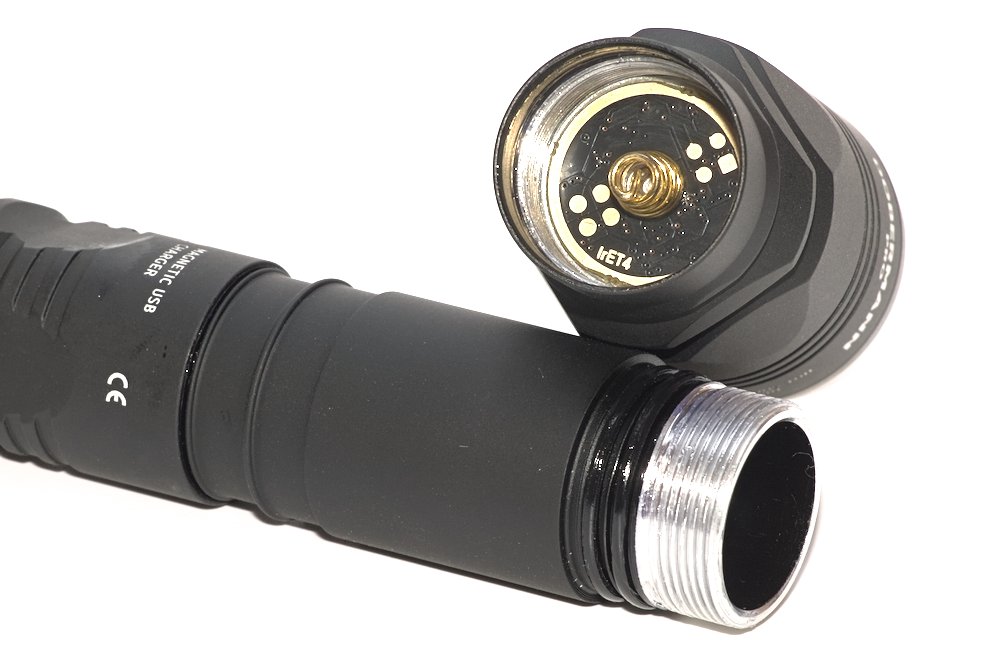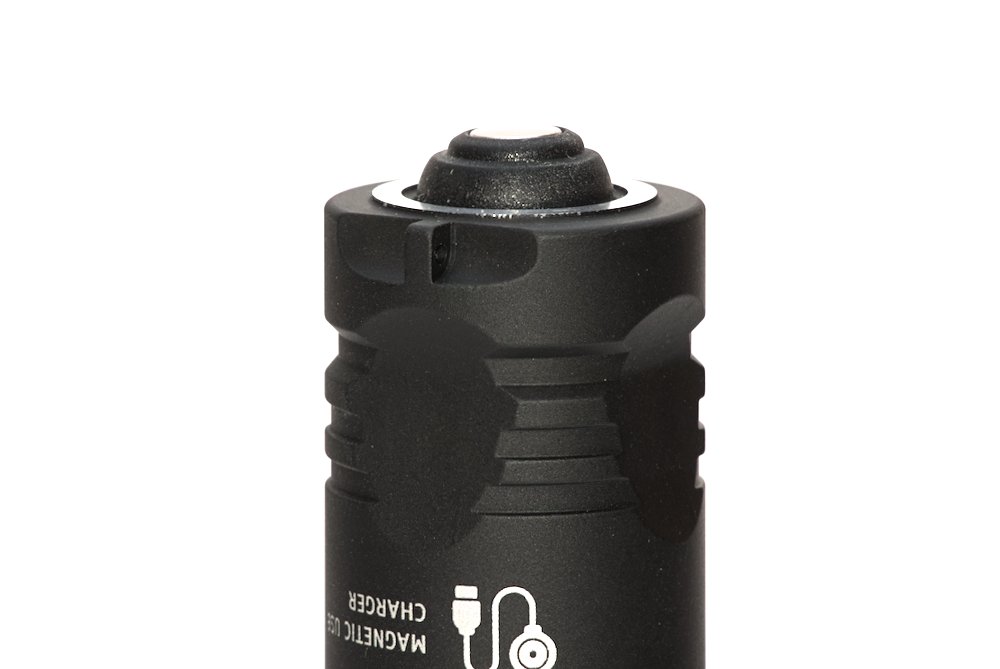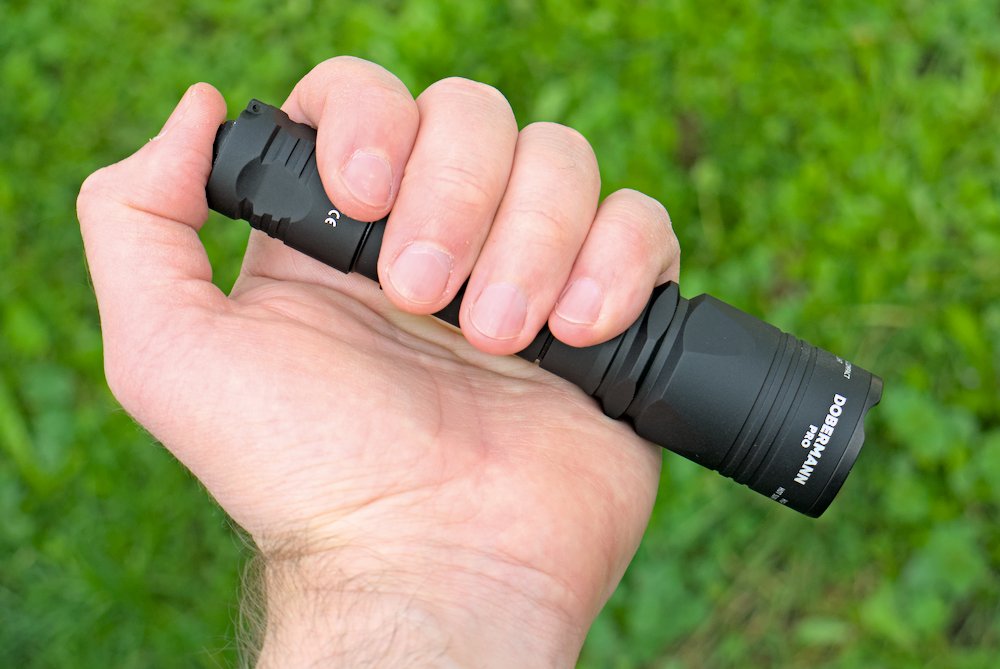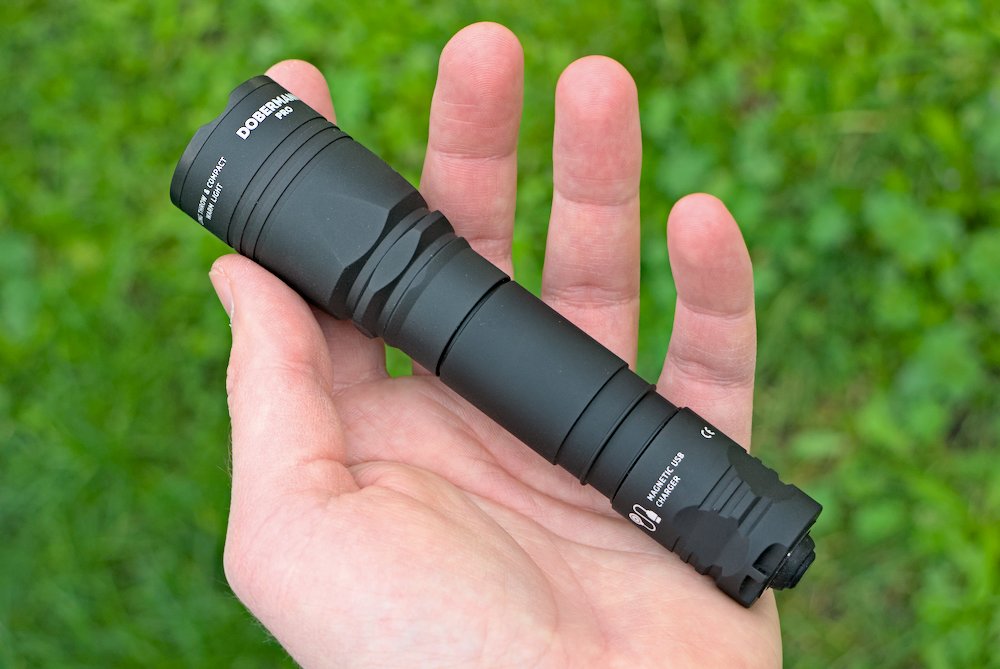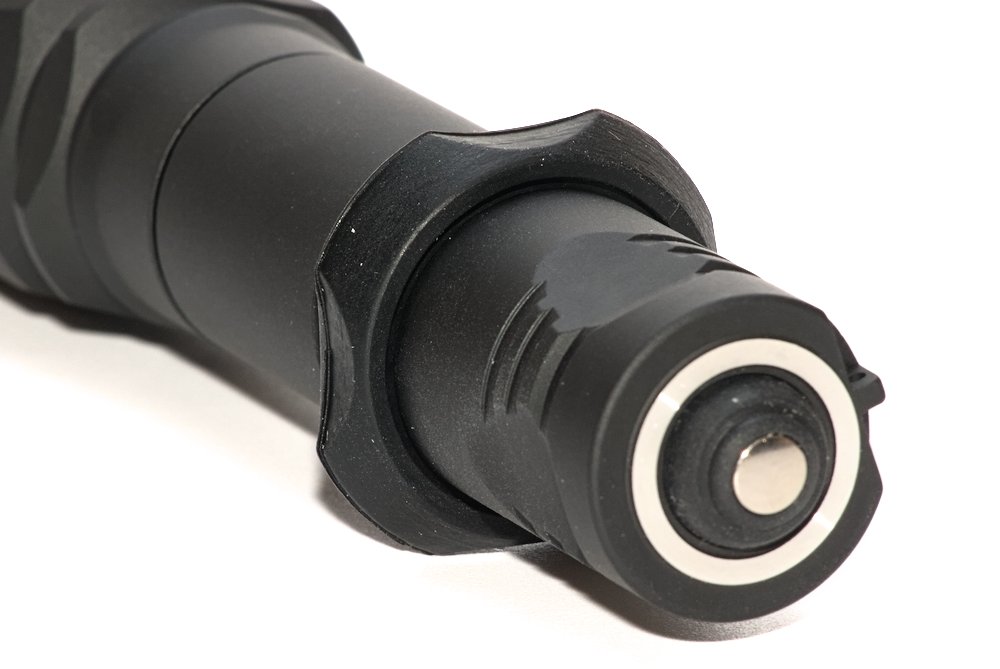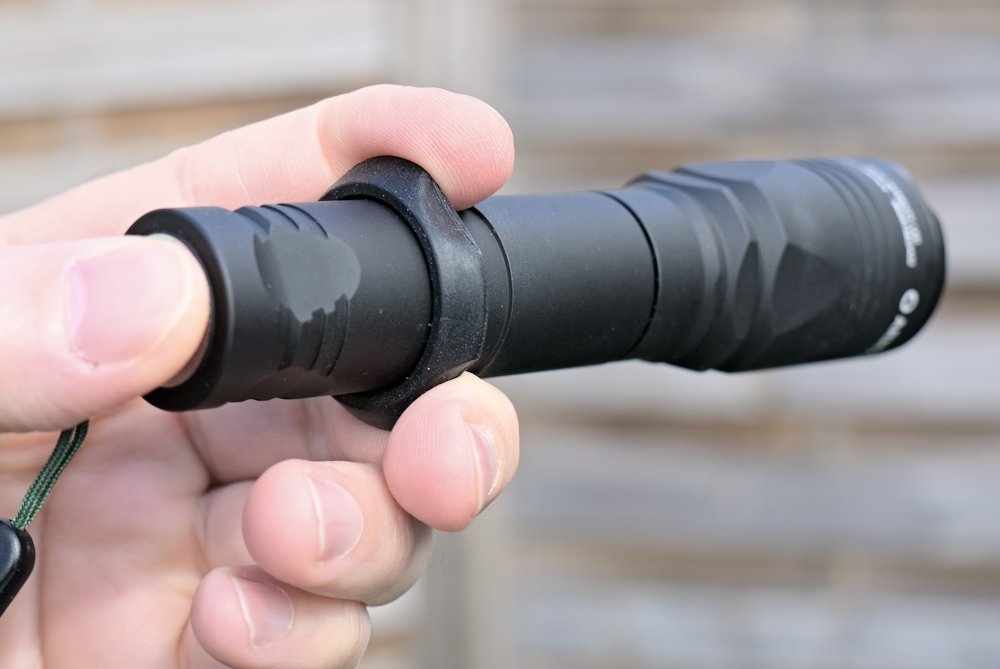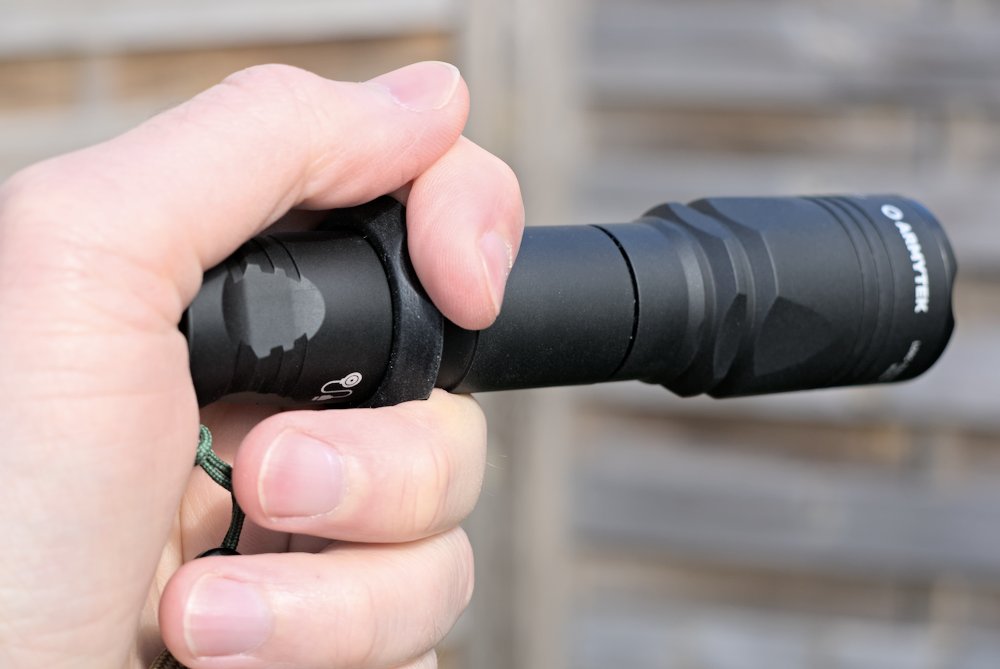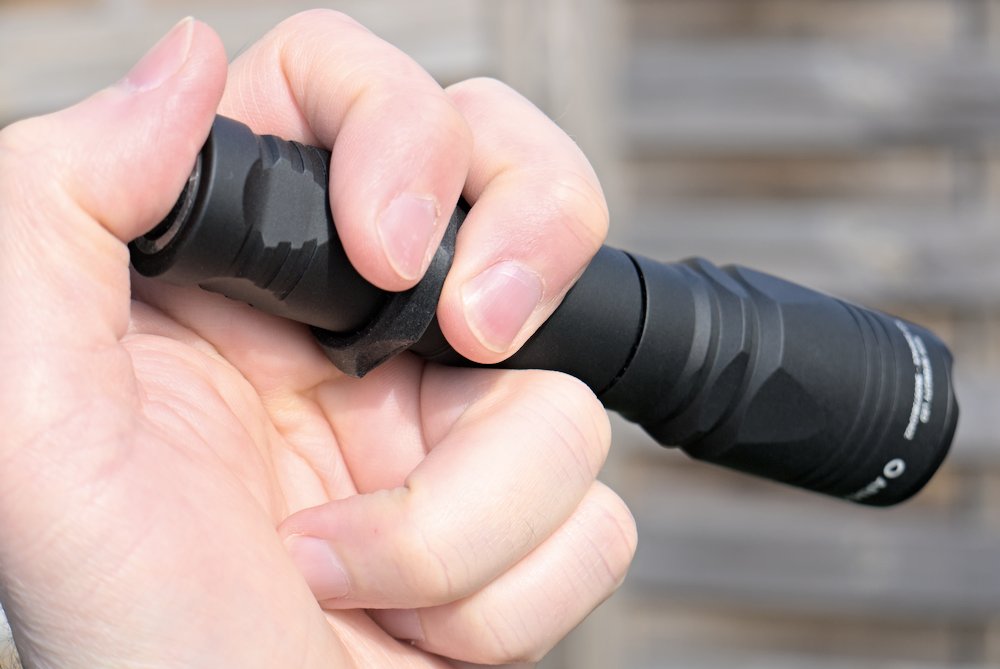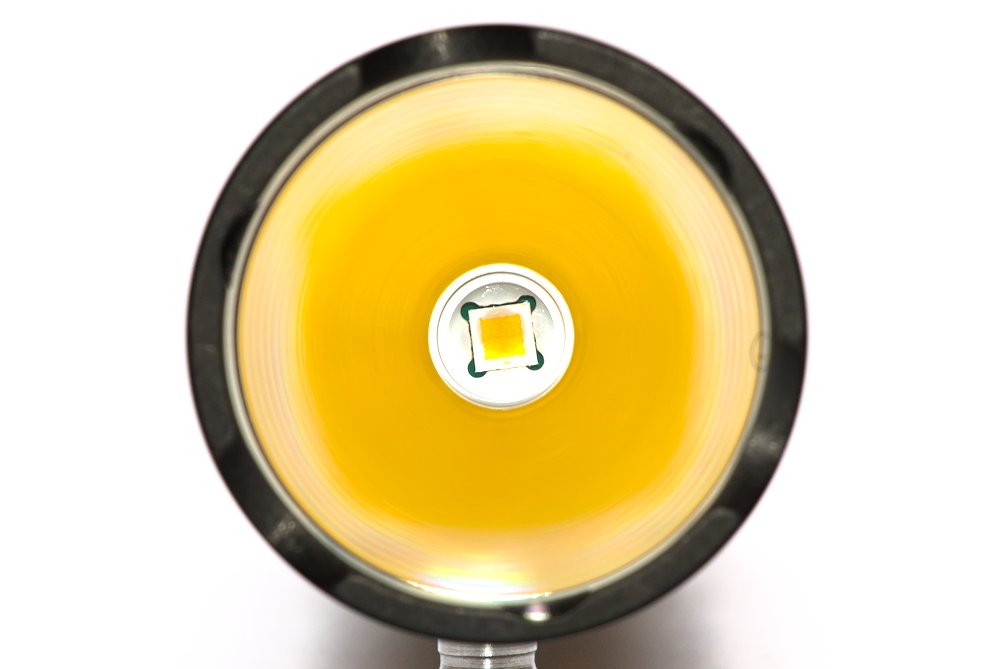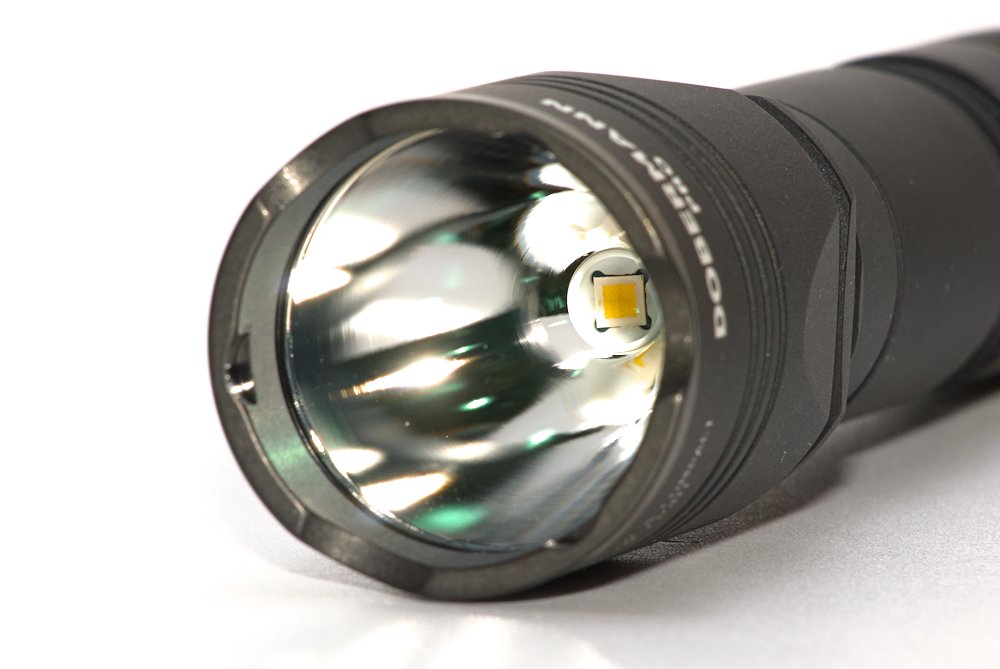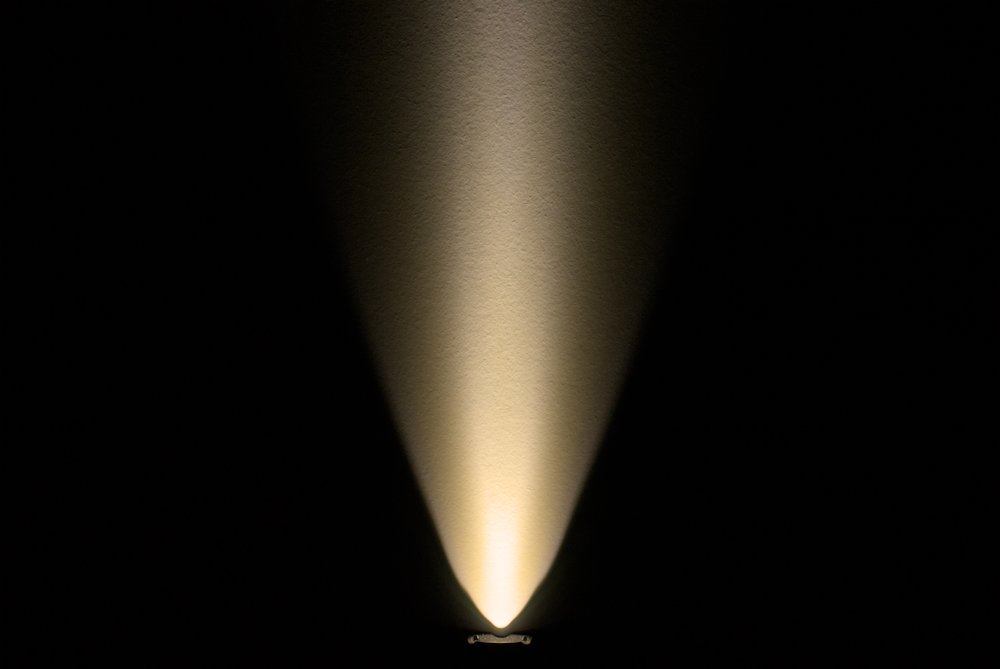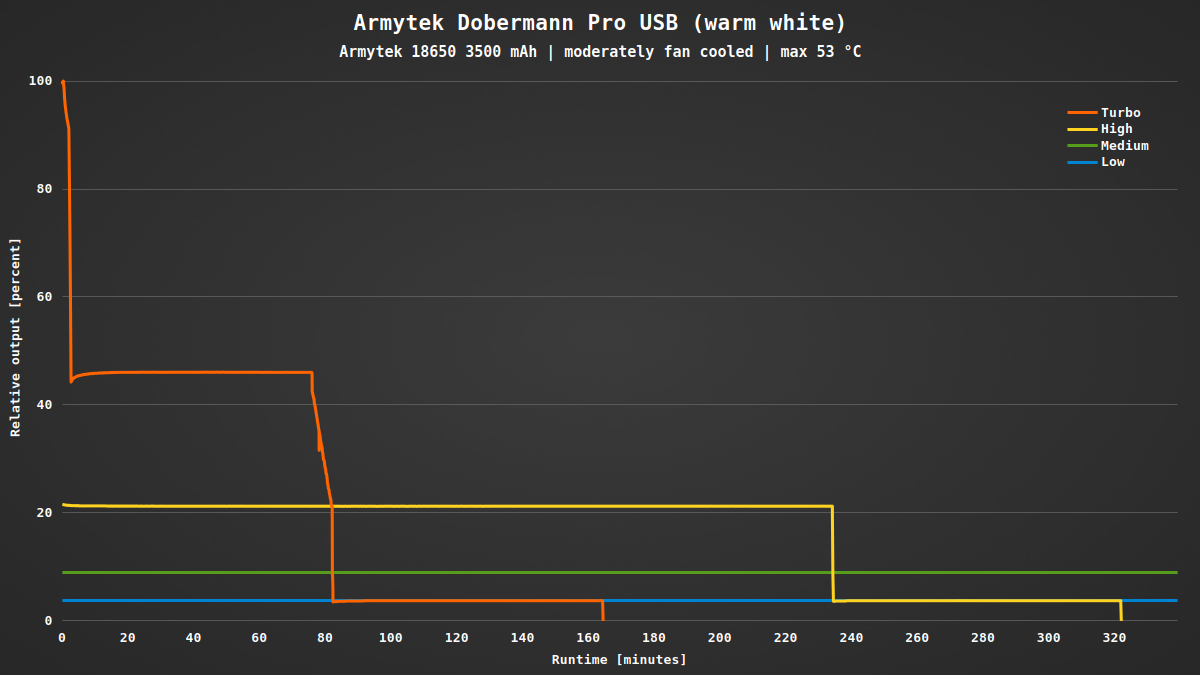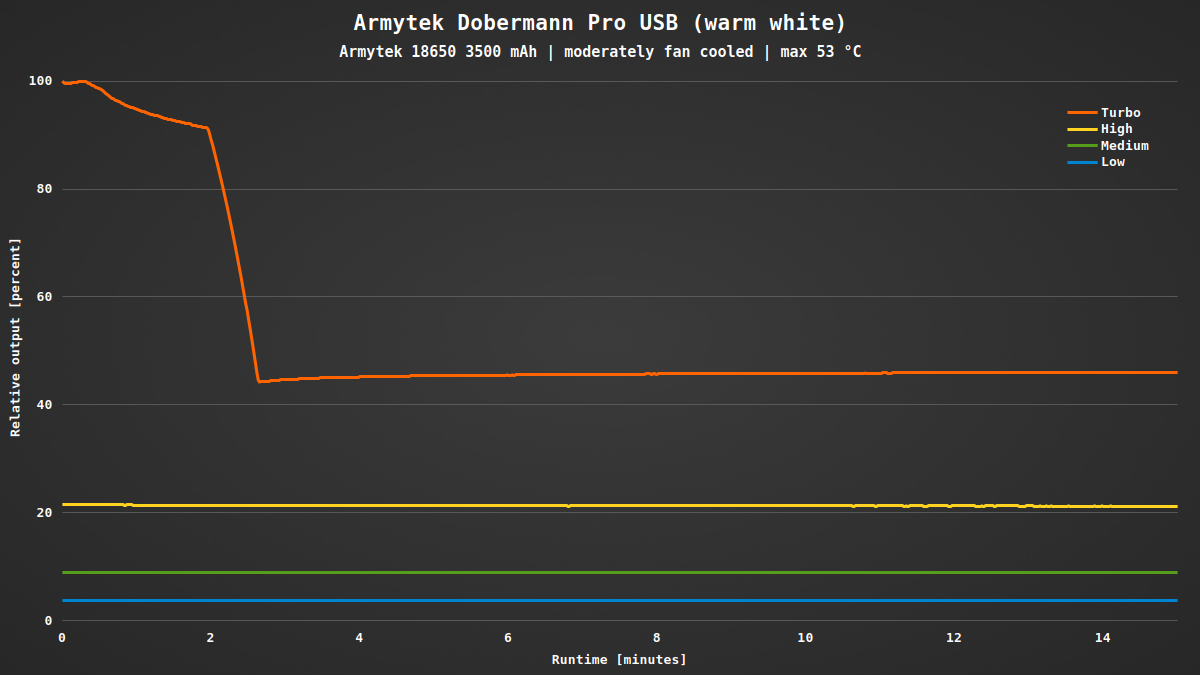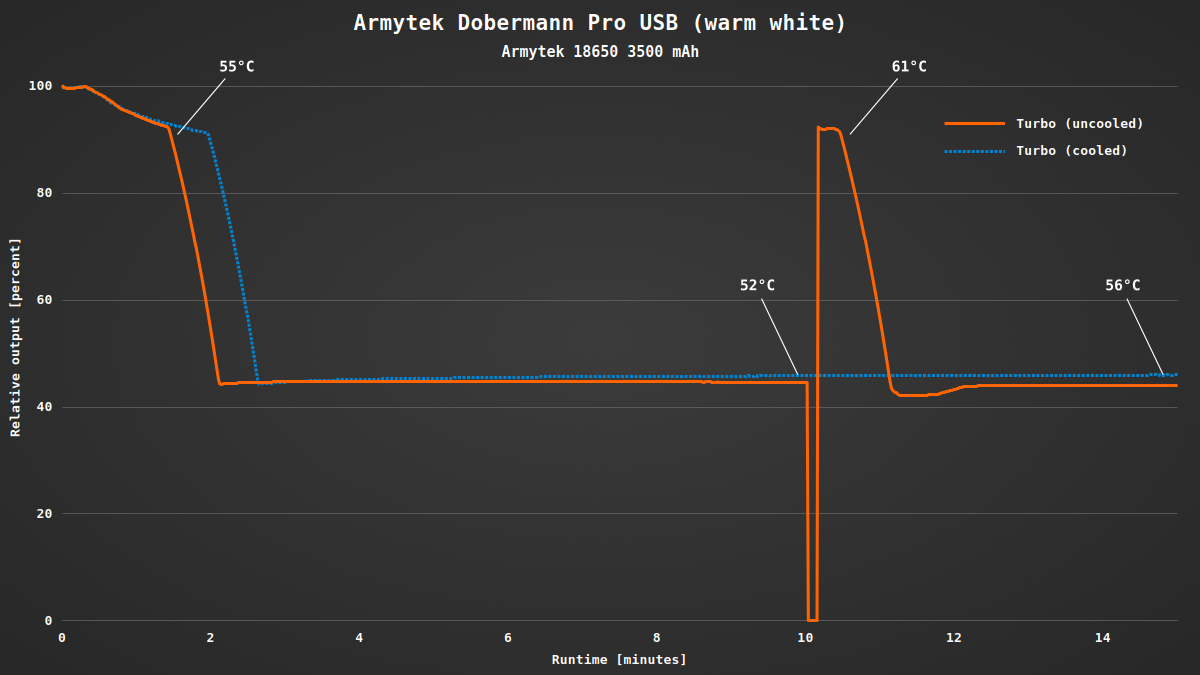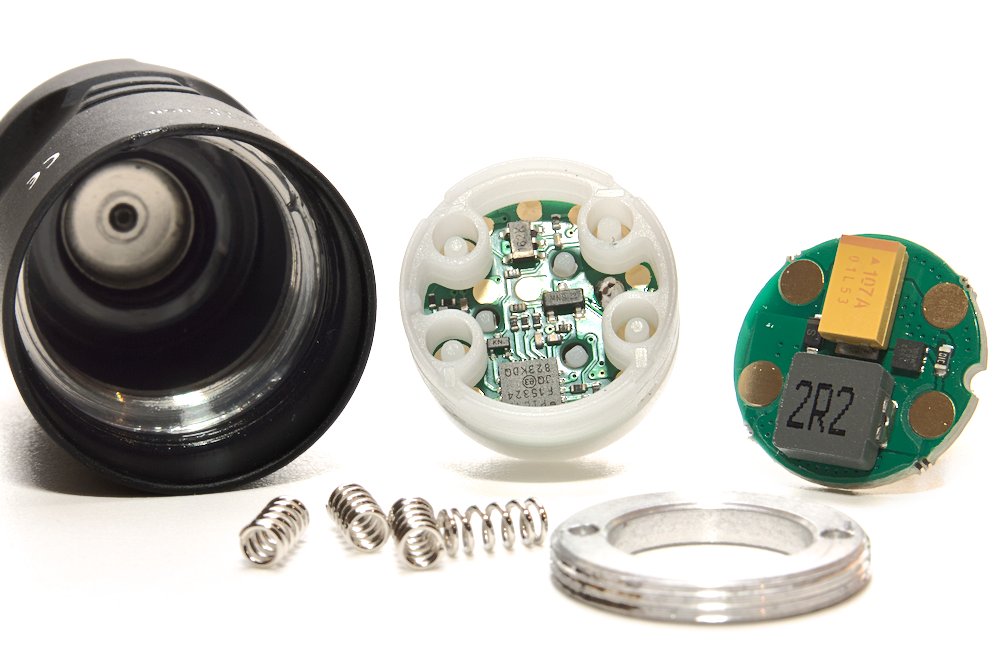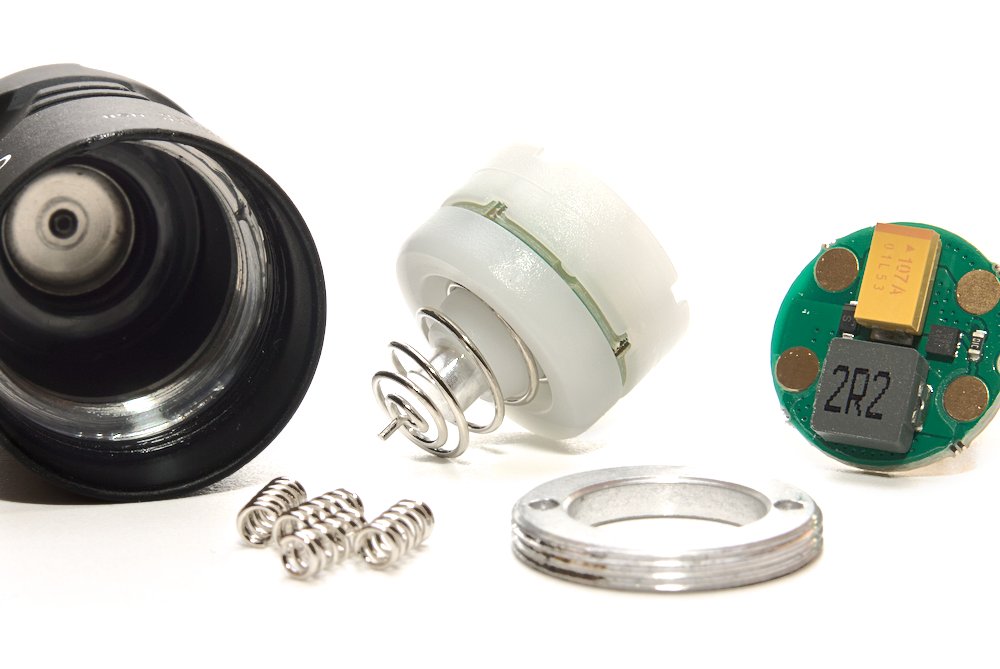A while a go I’ve reviewed the Armytek Prime C2 Pro, a small EDC-ish flashlight with floody TIR optic. This time I’d like to show you the Armytek Dobermann Pro, which is more of a tactical flashlight with reflector and a fancy tailswitch.
I’ve got this flashlight from the manufacturer for free, but I’ll try my best to be as honest as possible with the review.
This review is also available in German on my website: SammysHP Blog › Armytek Dobermann Pro
Supplied parts and hardware
- 18650 Li-ion battery (3500 mAh, unprotected, 3.6 V on delivery)
- Clip
- Holster
- Lanyard with small splitring and carabiner
- Tactical ring
- 2 replacement o-rings
- Magnetic charger
- Quick start guide (EN, DE, FR, RU, FI, SE, NO, PL)
The quick start guide contains a QR code that lets you download the full manual as a PDF. Saves paper and most functions are sufficiently explained in the quick start guide.
Simple design with matt black anodization. The textue allows a secure handling even without knurling, but makes it harder to clean. It’s almost like a chalkboard.
For a 18650 flashlight the Dobermann is more on the large size, on the other hand it appears to be normal for a tactical flashlight.
Length: 150 mm
Diameter: 33.5 mm (head) / 25.4 mm (battery tube and tailcap)
Weight: 113 g (plus 47 g for the battery)
Armytek has already announced a “Max” version with 21700 battery.
The front is protected by a blackened stainless steel bezel with minimal crenelation – enough to indicate if the light is on while standing upright.
The tailcap has the protruding switch and an attachment point for the lanyard. This is also the only sharp edge of the flashlight, so better use the included small splitring to save your lanyards.
The metal cap on the rubber tail switch is also one of the charging contacts for the magnet charger. Good solution to protect against water and dirt, but it requires the special charging adapter.
It’s enough to move the light near the charging adapter and it will find its way automatically and snap in place. Perfect! Head and tailcap must be screwed tightly for the charging to work. Charging happens at 1.2 A, so a full charge will take up to four hours.
There are two status LEDs in the adapter. Neat: After 30 seconds the LEDs will slowly fade to a low level to be less annoying in the dark.
| Color | Meaning |
|---|---|
| green | standby / charging finished |
| red blinking | contacts are dirty |
| orange blinking | Input voltage too low or dirty contacts |
| red | charging |
| orange | charging with reduced current |
While charging the flashlight turns off automatically. Charging will only start if the voltage of the battery is below 4 V.
Unfortunately Armytek uses two different charging adapters for their flashlights: The AMC-02 for the Wizard and Prime and the AMC-03 for their tactical flashlights like the Dobermann or Predator.
The protruding tailswitch makes tailstanding impossible. It will also roll away easily because all contact areas are round. The tactical ring shown later will help a lot with this.
The supplied clip is short and very stiff. I haven’t tried it because it would certainly damage the anodization of the flashlight, but I assume it works as expected.
As an alternative you can use the supplied holster to carry the flashlight. It works best with head first. Be careful with the switch: It can easily turn on by accident. A little cup like in the holster of the Klarus XT21X Pro would have been a good idea.
The holster can be attached with a closed loop or with an open loop with a snap and velcro. It also has a D-ring.
The rear threads are anodized to allow a mechanical lockout. The tailcap includes a long spring.
The head has a long spring as well. Here the threads are not anodized because you have to loosen the head for switching modes.
Each side has two o-rings and a huge load of silicone grease. Armytek promises that it is waterproof up to 25 m for 5 hours. The 3 mm wall thickness of the battery tube, long threads, long springs and partially potted electronics should make this flashlight really robust. Armytek says it will survive a drop of 25 m. Overall that’s a lot more than the IP68 rating.
User interface and features
The Dobermann has an electronic tail switch that behaves like a forward clicky. A half press gives you momentary light, while a full press toggles the light on and off.
Actuation of the switch is almost silent, but you can still feel a subtile click. Later I’ll show you the internals of the switch which are amazing. The feel of the switch is precise. Unfortunately it is very easy to press by accident due to its exposed position (which makes it also easy to find, though).
Modes can be changed by loosening or tightening the head. This is something that I last experienced with one of my first LED flashlights, the Fenix LD20. You’ll probably need two hands to twist the head, but otherwise it’s really intuitive.
You can choose between two UIs. Loosen and tighten the head at least ten times while the flashlight is on to switch between the UIs.
In hunting mode you’ll get turbo when the head is tightened. When it is loosened there are the levels low, medium and high. Switch between the modes by turning the light off and on for less than two seconds. This can be done easiest by tapping the switch until the desired mode, then fully press it. You can twist the head while the flashlight is on to switch between turbo and the last mode.
If you like you can also add strobe to the rotation. Tap the button at least 20 times quickly, then fully press it to add or remove the strobe mode.
Unfortunately low is very bright with 37 lm and there’s a significant gap between high (280 lm) and turbo (1400 lm). I’d preferred a better spacing from maybe 3 to 600 lm.
With the tactical mode turbo is the same when the head is tightened. You can choose between turbo and medium by quickly loosening and tightening the head while the light is on.
A loose head gives you strobe. Switch between low and high brightness by quickly tightening and loosening the head.
For a better “cigar grip” Armytek includes a silicone tactical ring. Just pull it over the tailcap and it will sit nicely in its own groove.
Illumination
The Dobermann is available in two variants: Cool white (up to 1500 lm) and warm white (1400 lm). I’ve chosen the warm white version because I prefer warm light and the 100 lm difference is almost unnoticeable. Both versions have a Cree XHP35.2 HI LED.
The color is a pleasant warm white without green or tint shift. The glass lens as a “green” AR coating. The deep reflector is mostly smooth, but you can see some concentric rings from the machining.
These rings are not visible in the beam at all. The spot – officially 6° – has a smooth transition into the 40° spill. It’s a very universal, slightly throwy beam. I’d say it’s perfect for 2 – 100 m.
The bezel causes a slightly hexagonal spill, but in practice it’s not a big problem.
Driver and runtime
Runtimes of Armytek’s specifications perfectly match with my measurements (based on ANSI FL1, time until 10% of initial brightness).
| Mode | Brightness¹ | Runtime¹ | Intensity¹ (distance²) | Current³ |
|---|---|---|---|---|
| Turbo | 1400/660 lm | 3 min + 1 h 30 min | 33 000 cd (363 m) | 6.20 – 8.00 A |
| High | 280 lm | 5 h 13 min | 0.70 A | |
| Medium | 112 lm | 12 h 20 min | 0.28 A | |
| Low | 37 lm | 32 h | 0.13 A | |
| Off | 15 µA |
¹ Specification ² ANSI FL1 ³ Measured
Except turbo, the brightness is perfectly flat and without any PWM thanks to the boost driver. If the voltage is below 3.5 V the flashlight will blink twice 30 seconds after turn on. If the voltage is too low, the output will be reduced. At 2.75 V the LVP kicks in and turns off the flashlight completely.
Turbo has a timed stepdown after three minutes. The driver also monitors the temperature and reduces the brightness when the head reaches about 55 °C. You can restart turbo, but the brightness will be reduced quickly based on the temperature.
I’m particularly amazed by the engineering of the tail switch. It functions as a regular forward clicky, but it is entirely emulated by an electronic circuit. This is the first time I’ve seen a powerful PIC microcontroller as a switch, completely together with its own voltage regulator, two PCBs, various custom parts, all sandwiched with spring in a plastic cage.
Assembly wasn’t easy. The tip of the spring must be inserted into a small hole of the dome of the switch, then everything has to be pressed together while being inserted into the tailcap and secured with a retaining ring.
Why so complex? First of all it feels nice. Then it allows to use a remote pressure switch that is connected magnetically (optional accessory). And it makes magnetic charging possible without loosening the tailcap as with the Wizard or Prime. The contacts don’t provide any current, so it won’t ignite a fire.
Conclusion
The Armytek Dobermann Pro is a solid “tactical” flashlight without unnecessary gimmicks. It appears to be well made and robust and comes with a nice universal beam and a simple, intuitive UI. Another pro is the magnetic charging and the option for a remote pressure switch.
I would have liked to see a better mode spacing and a lower low. Pricewise the Dobermann is on the expensive side, but with heavy use Armytek’s promises about its robustness might quickly compensate it.
You can get 15% off with the code SAMMYSHP15 in Armytek’s shop. Right now there’s even an easter special with 20% off!
